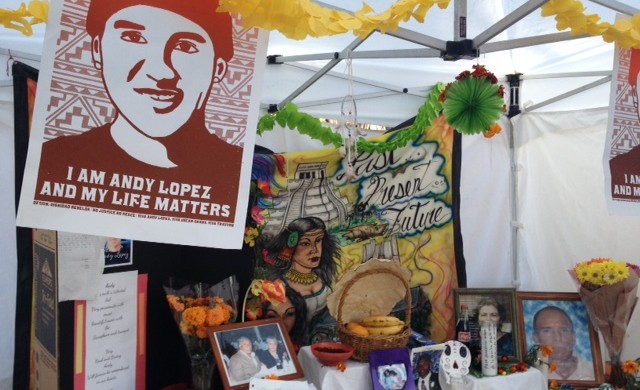
People in Santa Rosa have held march after march in the two weeks since a Sonoma County sheriff's deputy shot and killed Santa Rosa eighth-grader Andy Lopez. One theme that's emerged during the protests is what many say is a deep gulf between Sonoma County's Latino residents and the rest of the community.
Professor Francisco Vazquez, a historian at Sonoma State University, says he knows why the Lopez killing has sparked anger among Latino residents. Vasquez has lived in the county for 30 years, some of that in the largely Latino Roseland neighborhood where the boy was shot.
"When you live day in and day out a lot of violations to your own human dignity and there’s really no outlets, then when an incident like this shooting happens, then all hell breaks loose," he says. "And then people from the outside who don’t take part of this experience are surprised and shocked."
Vazquez says those indignities can be personal, like getting poor customer service at stores when he’s not dressed professionally. But they can also be systemic. Latinos in Sonoma County are half as likely as those in the rest of the state to graduate with necessary courses to go on to a four-year university. And Latinos are three times more likely to be living in poverty compared to other county residents.
Politically, despite making up a quarter of Santa Rosa’s population, there was no Latino representative on the City Council until 2008.
A group of Latino leaders are working to change issues around representation. Los Cien is a local group that is working within the community to help groom future leaders and build unity, says the group’s founder, Herman Hernandez.